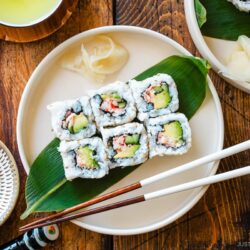
California Roll
Filled with creamy avocado, sweet crabmeat, and crunchy cucumber, California Roll is by far the most popular style of rolled sushi in the US. It's easier than it looks to make at home, even for beginners! I’ll show you how to roll them perfectly every time.
Ingredients
For the Sushi Rice
- 2¼ cups uncooked Japanese short-grain white rice (3 rice cooker cups, 540 ml)
- 2¼ cups water
- 1 piece kombu (dried kelp) (5 g; 2 x 2 inches, 5 x 5 cm per piece; optional, for a nice aroma!)
- ⅓ cup seasoned rice vinegar (sushi vinegar) (or make the homemade recipe below)
For the Filling
- 5 oz real or imitation crabmeat (1 package (154 g each) of Kibun crab-flavored surimi; or use canned or freshly cooked crabmeat)
- 1 Tbsp Japanese Kewpie mayonnaise
- 2 Japanese or Persian cucumbers
- 1 avocado (large)
- ½ lemon (for the avocado)
For the Sushi Rolls
- 4 sheets nori (dried laver seaweed)
- 4 Tbsp toasted white sesame seeds
- toppings of your choice (try ikura (salmon roe) or yuzu-flavored tobiko (flying fish roe); optional)
For the Homemade Sushi Vinegar (optional)
- ⅓ cup rice vinegar (unseasoned)
- 3 Tbsp sugar
- 1½ tsp Diamond Crystal kosher salt
Instructions
- Before You Start: You'll need ¾ cup (110 g) of prepared sushi rice for each California roll or a total of 6 cups (880 g) of seasoned rice for 8 rolls. Cook 2¼ cups (3 rice cooker cups) of uncooked short-grain white rice to yield 6⅔ cups (990 g) of cooked rice.
- Now, gather all the ingredients.
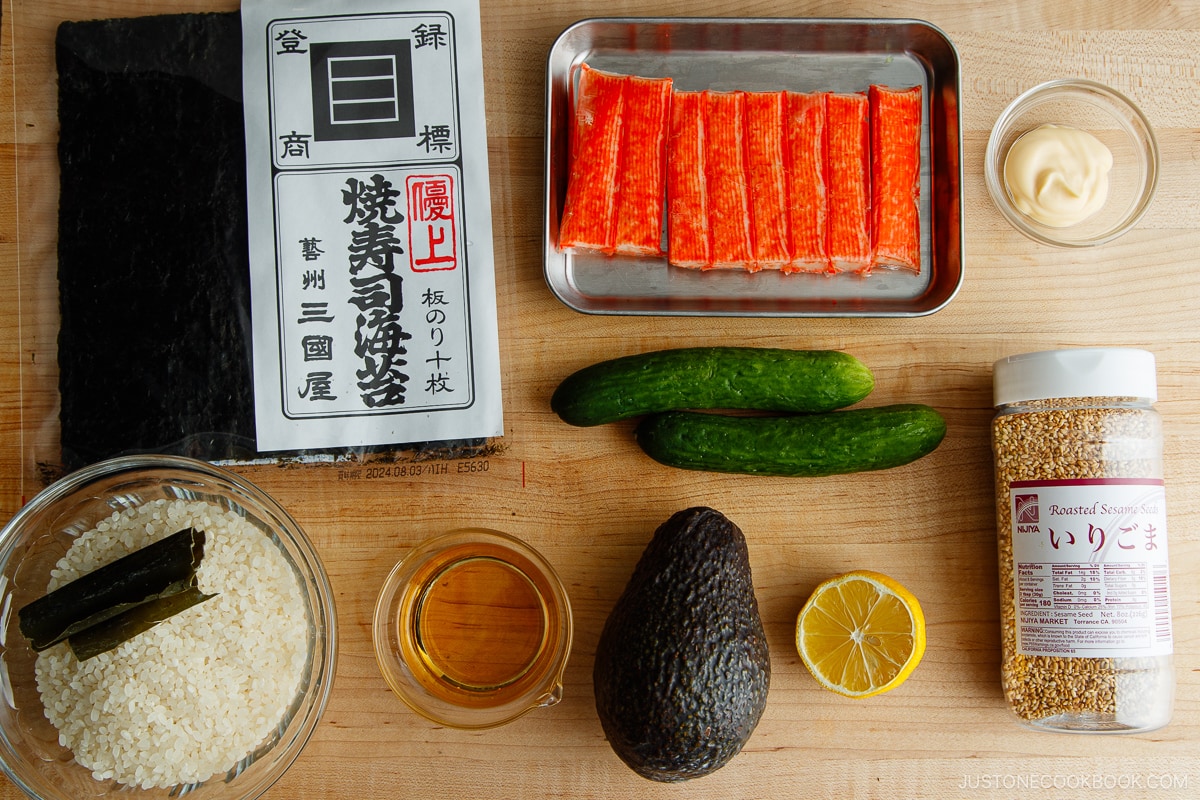
To Cook the Rice
- Wash and rinse: Put 2¼ cups uncooked Japanese short-grain white rice in a large bowl. Add enough cold tap water to wet the rice, then drain. Use your fingers to gently agitate and “wash“ the wet grains in a circular motion for 10–15 seconds. Rinse with more water, then immediately pour off the cloudy water. Repeat washing and rinsing two more times until the water is almost clear. Drain it well in a fine-mesh sieve and shake off any excess water.
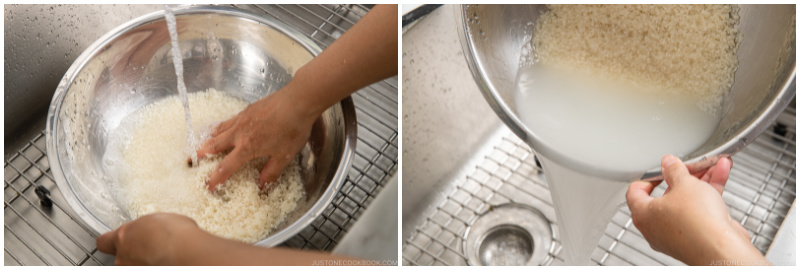
- Soak and cook: Transfer the well-drained rice to the inner pot of a rice cooker. Add 2¼ cups water to the pot. Level the rice, then place 1 piece kombu (dried kelp) on top. Soak the rice in the water for 20–30 minutes. Then, start cooking. Tip: If you don‘t have a rice cooker, cook the rice in a pot on the stove, Instant Pot, or donabe with the measured water I specify in this recipe.
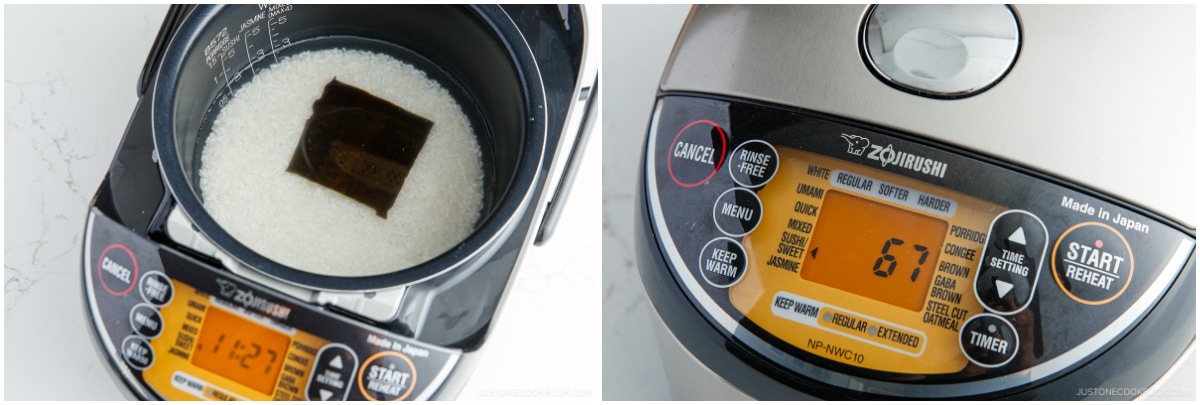
To Season the Sushi Rice
- Make homemade sushi vinegar (optional): Combine ⅓ cup rice vinegar (unseasoned), 3 Tbsp sugar, and 1½ tsp Diamond Crystal kosher salt in a small saucepan. Bring it to a near simmer over medium-high heat and whisk to completely dissolve the sugar. You could also microwave the ingredients in a microwave-safe bowl for 1 minute to dissolve the sugar. Set aside to cool.
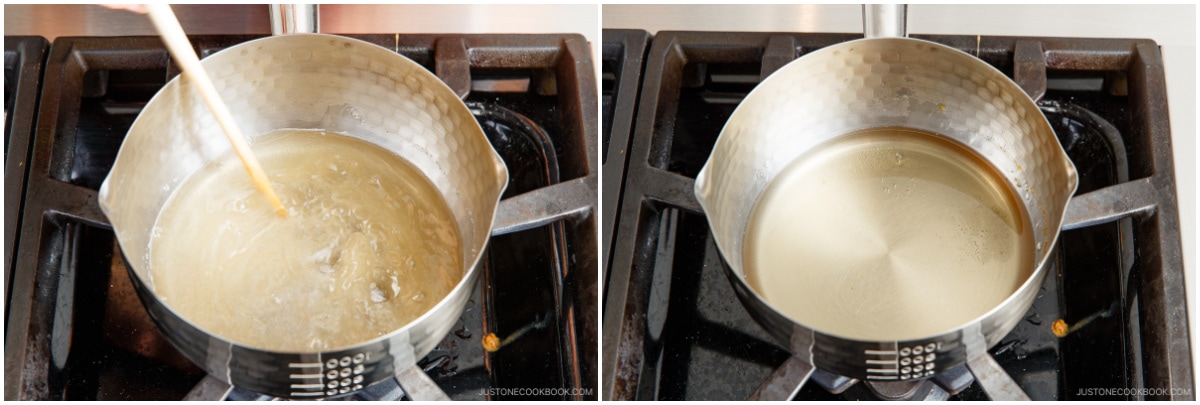
- When the rice is cooked, discard the used kombu. Tip: You can repurpose it to make simmered kombu.
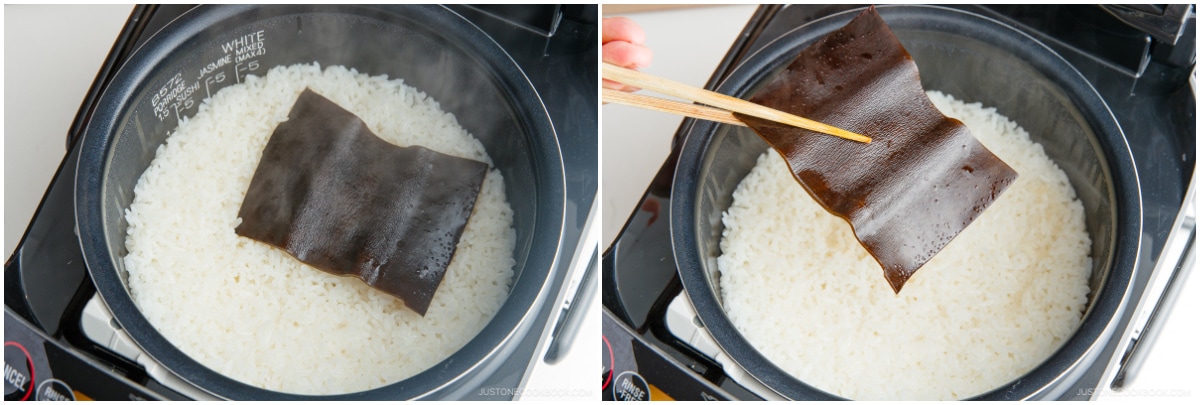
- If using a sushi oke (hangiri), moisten it with running water, drain well, and dry with a clean towel. Transfer the hot cooked rice to the sushi oke; you could also use a large salad bowl or baking sheet lined with parchment paper. Then, spread out the rice evenly so it will cool faster. Tip: A wooden tub helps absorb excess moisture.
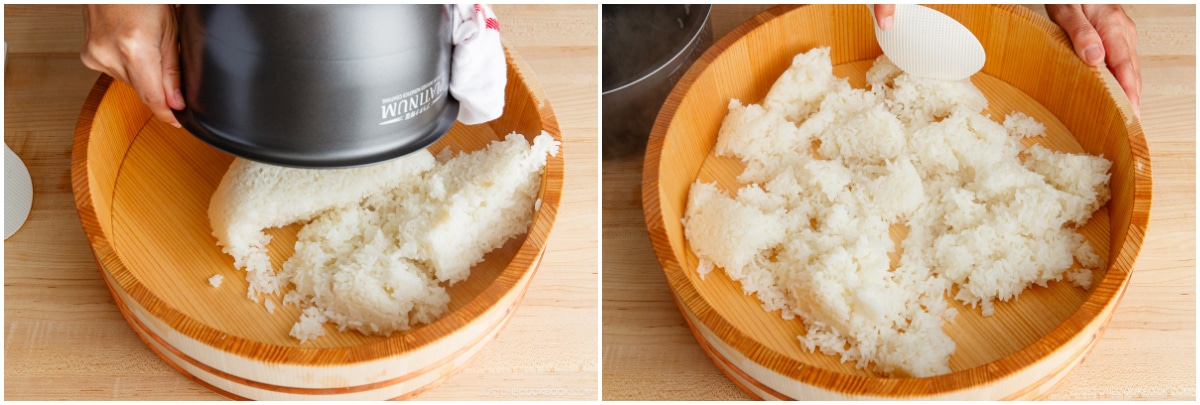
- Immediately drizzle ⅓ cup seasoned rice vinegar (sushi vinegar) or the cooled homemade sushi vinegar over the hot rice.
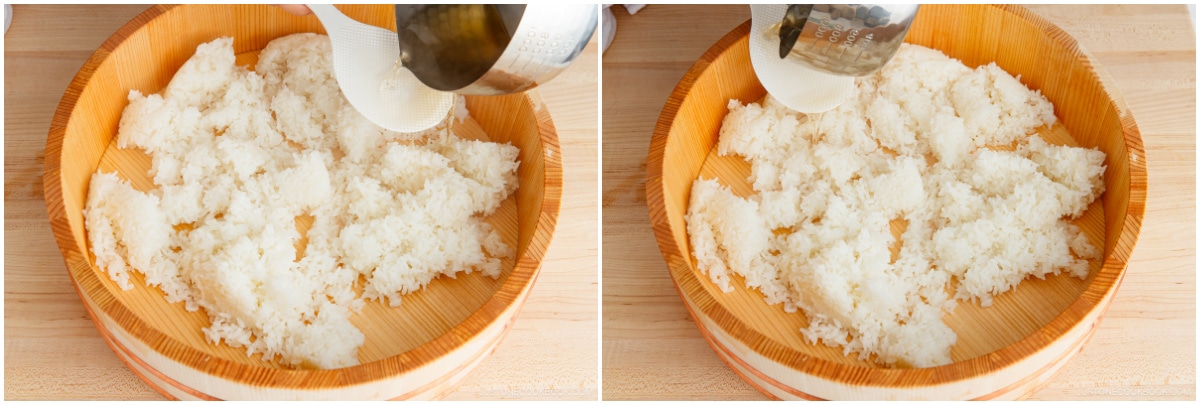
- With a rice paddle, gently “slice” the hot rice at a 45-degree angle to incorporate the sushi vinegar and separate the rice chunks. Do not stir or mash the rice because that may break the grains and make it mushy. While slicing, vigorously fan the rice with a paddle fan or other fan; this wicks away the excess moisture and makes the rice shine. Gently flip the rice after every few slices.
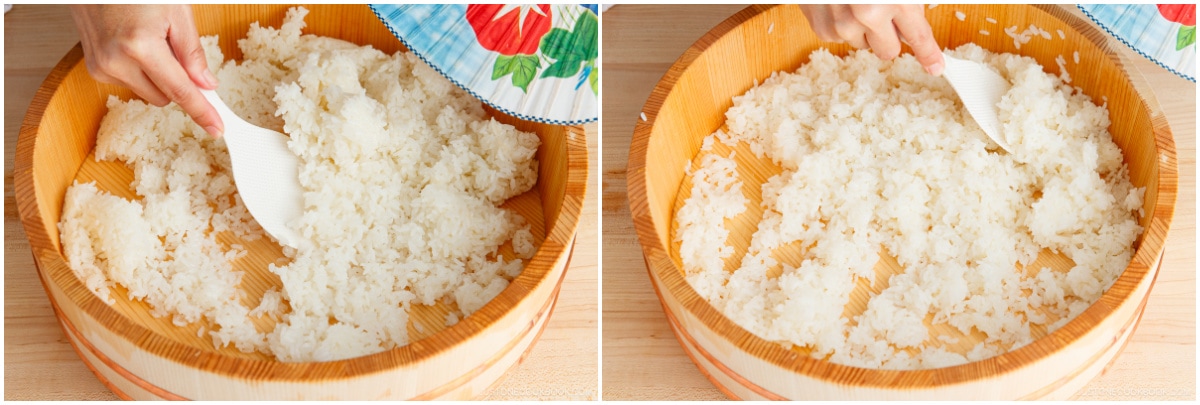
- Repeat slicing and fanning until the rice is cooled to the temperature of human skin. Cover the prepared sushi rice with a damp cloth while you prepare the fillings. Keep it covered at all times to prevent drying.
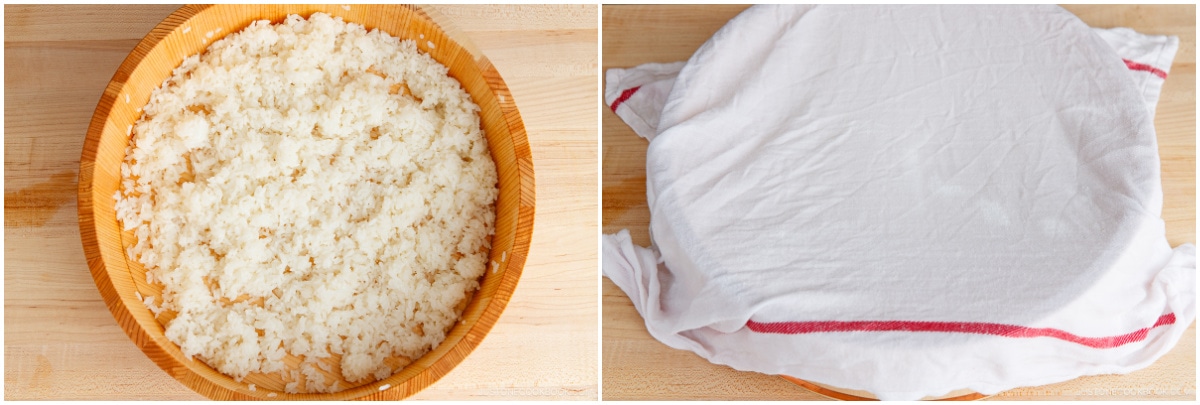
To Prepare the Fillings
- Crabmeat: Cut 5 oz real or imitation crabmeat into smaller pieces, about 1 inch (2.5 cm) wide.
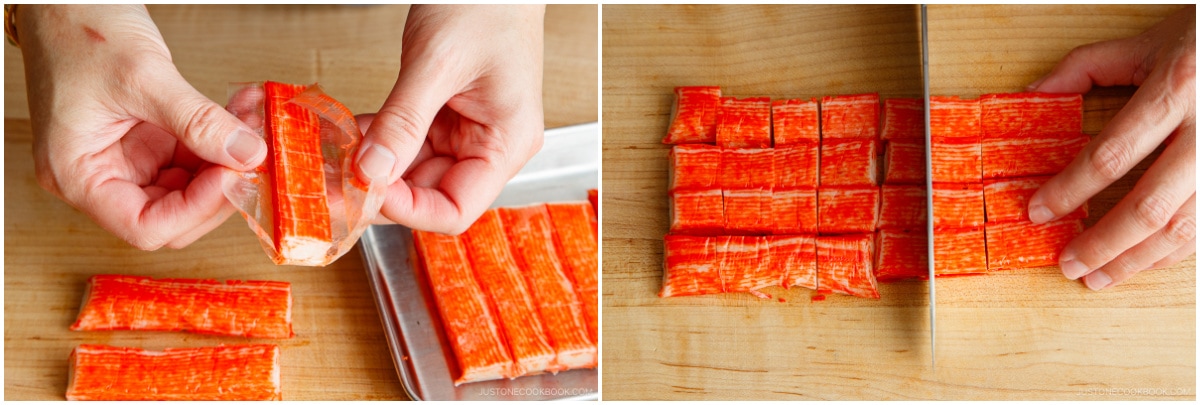
- Separate and shred the crabmeat with your fingers and place in a bowl. Add 1 Tbsp Japanese Kewpie mayonnaise and mix it all together.
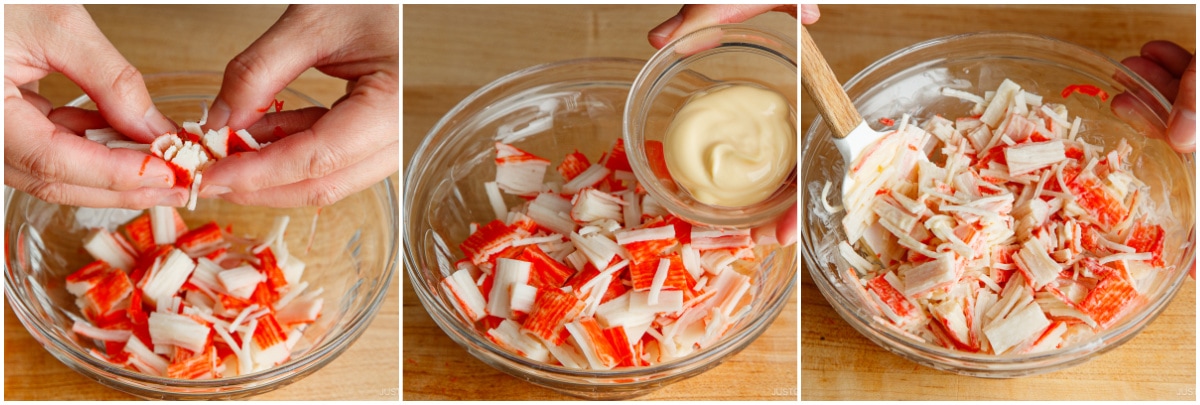
- Cucumber: Cut 2 Japanese or Persian cucumbers into quarters lengthwise.

- Remove and discard the seeds. Then, cut it lengthwise into thin, long strips.
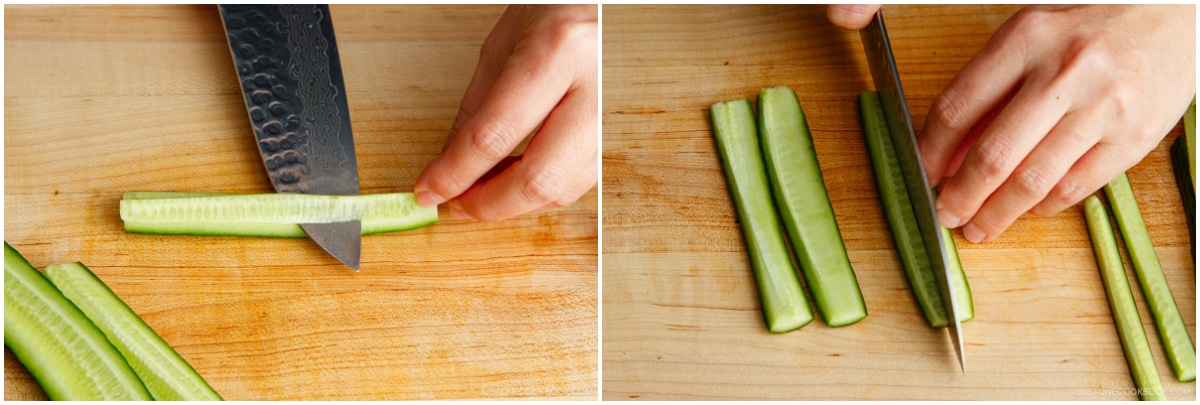
- Avocado: Cut 1 avocado (large) in half lengthwise around the seed: Insert the knife through the skin and flesh until it meets the pit. Rotate the avocado so the knife slices all the way around the pit. Twist the two halves until they separate.
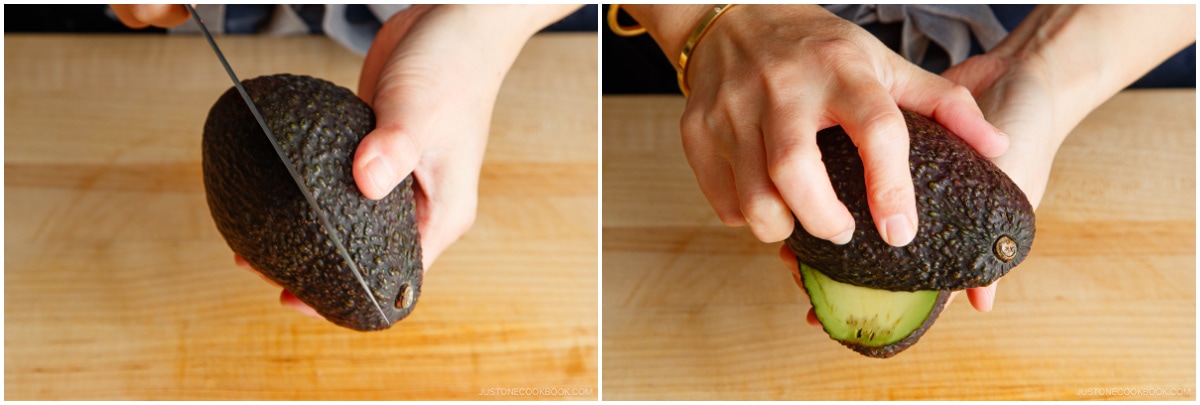
- Set the half with the pit on the cutting board or hold it with a folded kitchen towel. Gently hit the pit with the heel of the knife to embed the edge. Twist the knife and pit in a counter direction to the avocado; the pit should come out smoothly. Next, slice the avocado in half lengthwise to make quarters (leave the skin on).
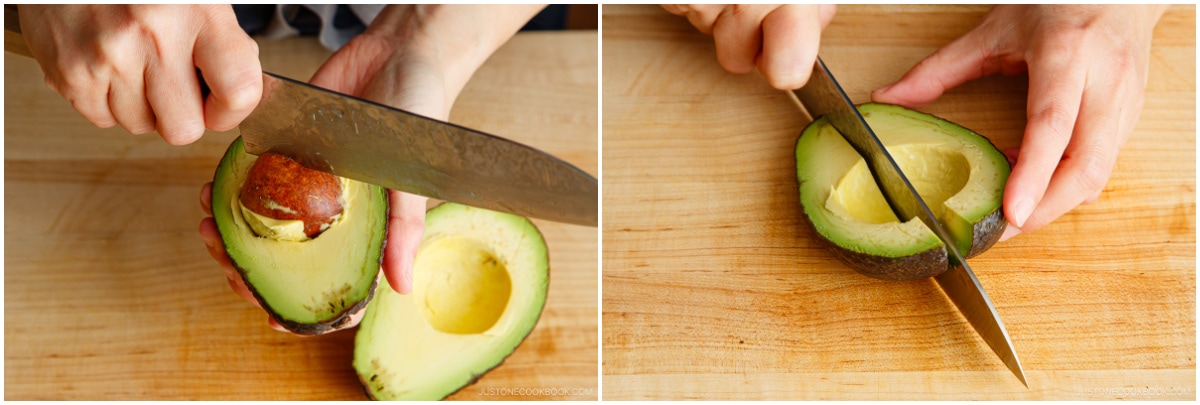
- Carefully cut the quarters lengthwise into thin, ¼-inch (6-mm) slices, again leaving the skin on. Squeeze the juice of ½ lemon on the slices to prevent browning.
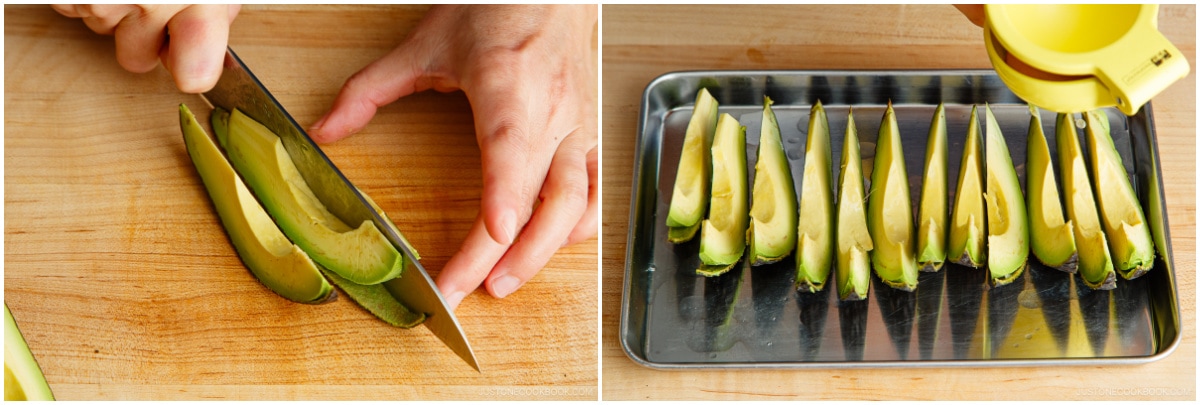
- Nori: Cut 4 sheets nori (dried laver seaweed) in half crosswise to make 8 half sheets.
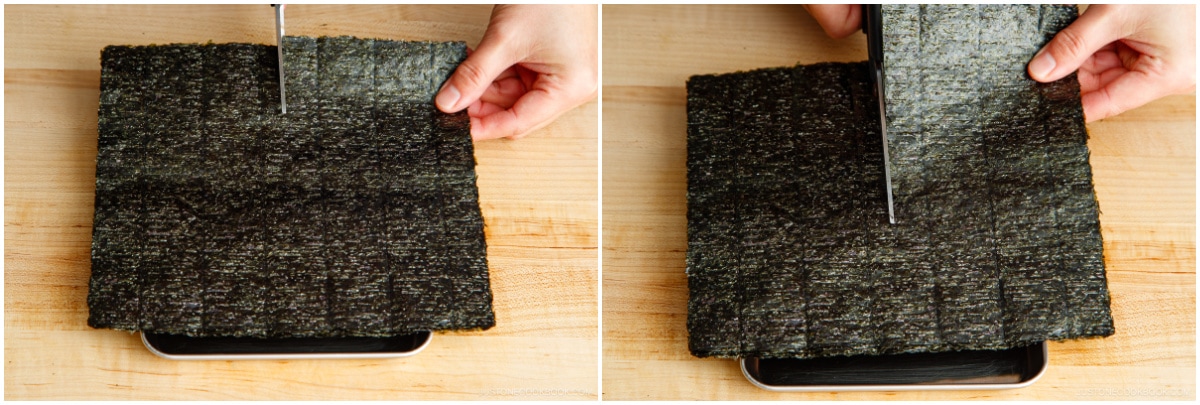
To Build the Rice Layer
- Wrap the front and back of the bamboo sushi mat with plastic wrap.
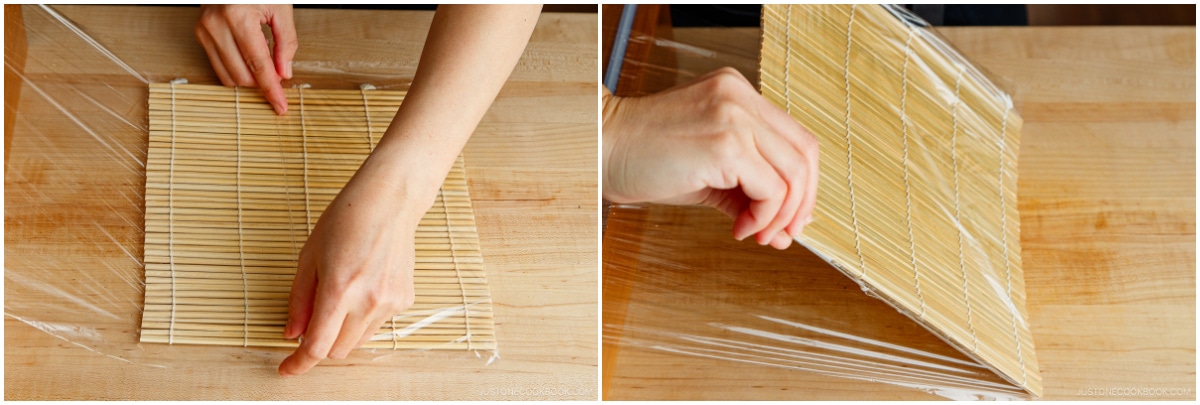
- Keep the sides uncovered so no air gets trapped.
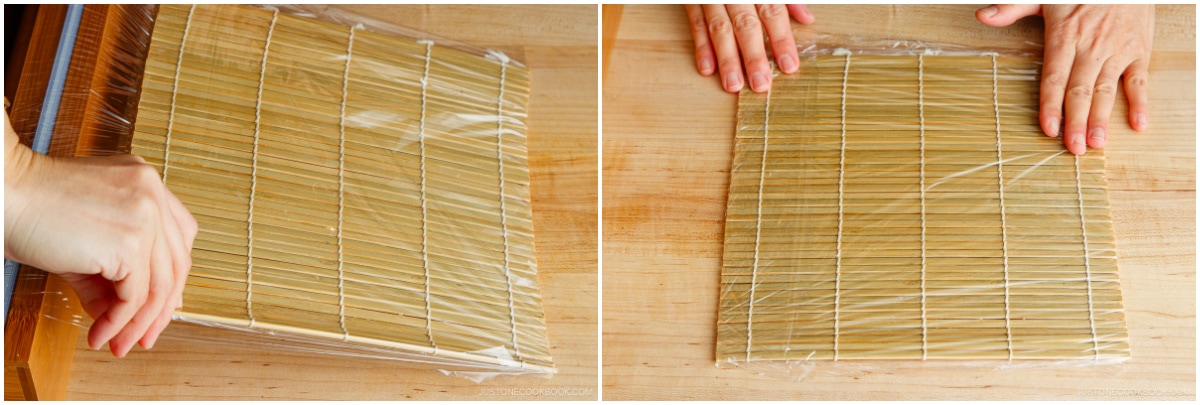
- Dip a ¾-cup measuring cup into a bowl of water to wet it, shake off gently, and fill the cup with sushi rice.
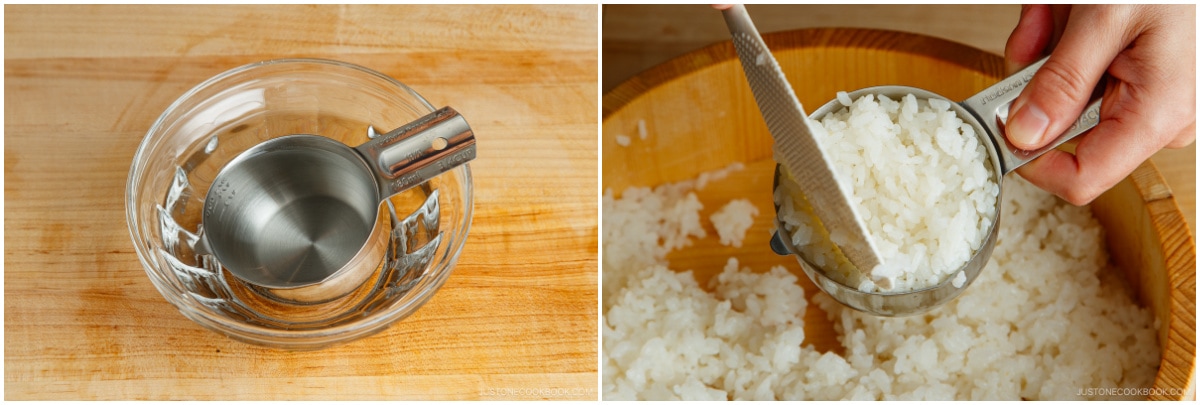
- Lay a nori half sheet, shiny side down, on the bamboo sushi mat. Wet your fingers in the water bowl and evenly spread ¾ cup (110 g) sushi rice across the nori. Apply very gentle pressure so you don‘t mash the rice grains. Alternatively, you can use a plastic rice paddle to keep your hands clean.
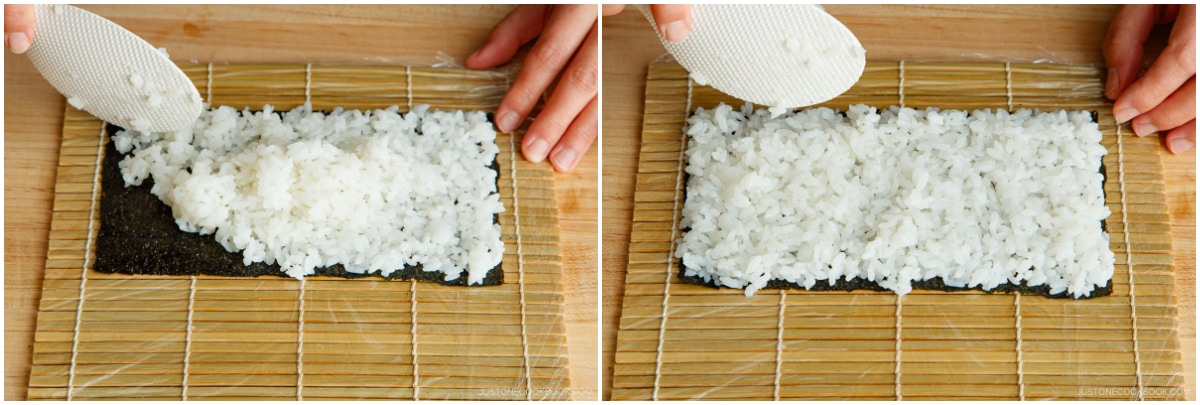
- Sprinkle the rice with about ½ Tbsp toasted white sesame seeds.
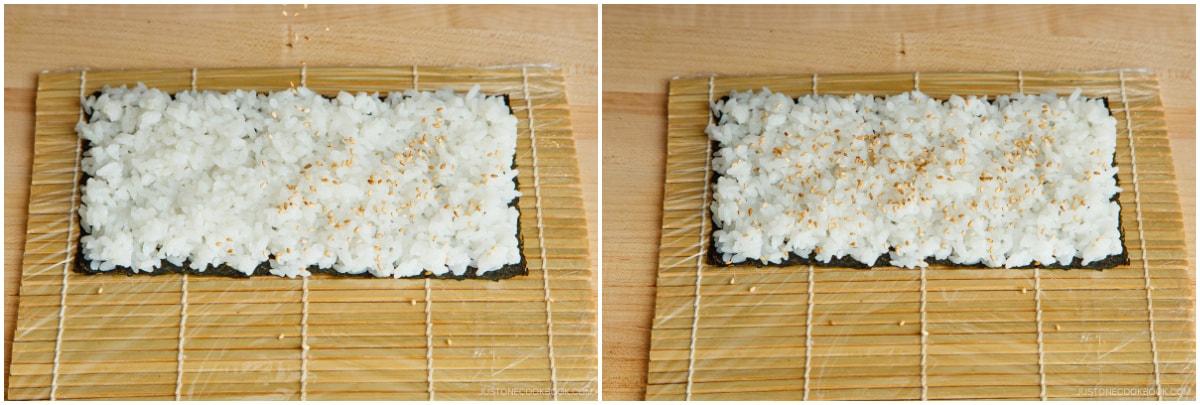
To Fill and Roll
- Flip it over so the rice is now facing down on the mat. Place the nori about 1 inch (2.5 cm) away from the mat's bottom edge. Starting ½ inch (1.3 cm) up from the bottom of the nori, line up one portion of crabmeat, avocado with skins removed, and cucumber across the nori. Tip: Don‘t add too much filling, or it‘ll be extremely difficult to seal the roll.
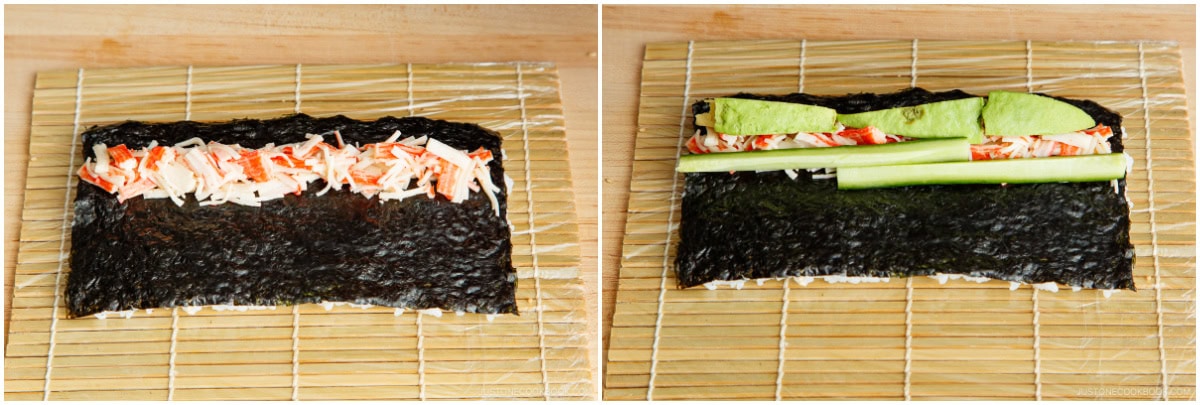
- Grab the bottom edge of the mat with your index fingers and thumbs and hold the filling in place with your other fingers.

- Roll the mat over the filling until the rice at the bottom edge meets the nori near the top edge. Then, flip back the mat‘s bottom edge toward you.
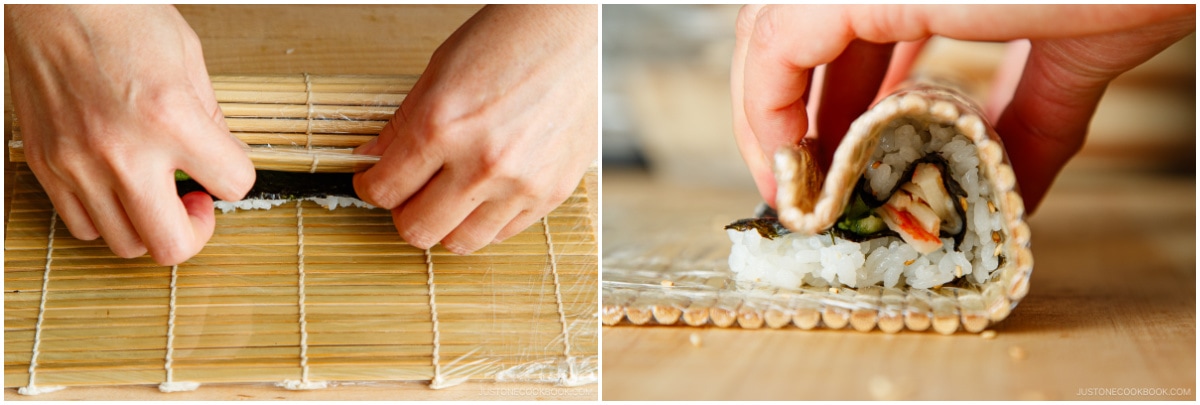
- Firmly squeeze the roll through the mat with one hand while you use your other hand to pull the top of the mat away from you. Tip: This tension helps form a tight cylinder.
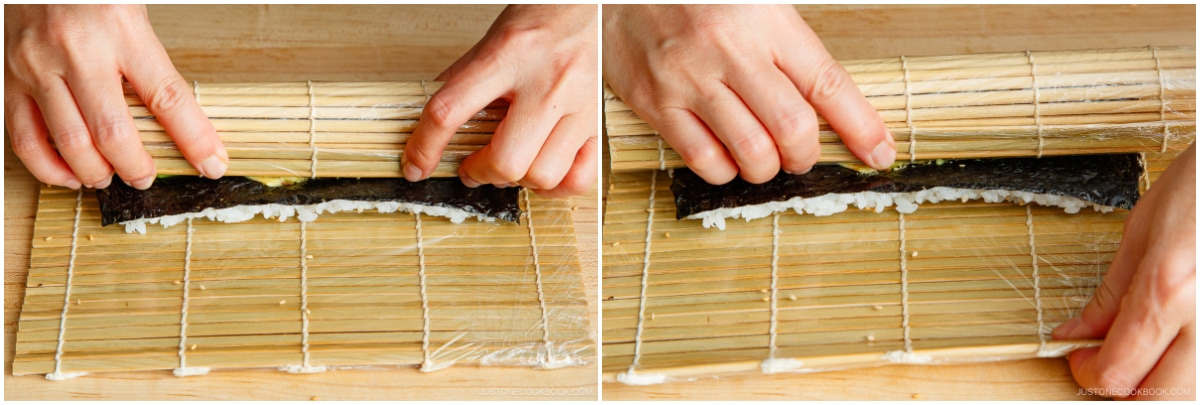
- Next, use one hand to lift and slightly pull the mat's bottom edge as you use your other hand to roll the sushi and mat forward. Keep gentle pressure on the mat as you roll.
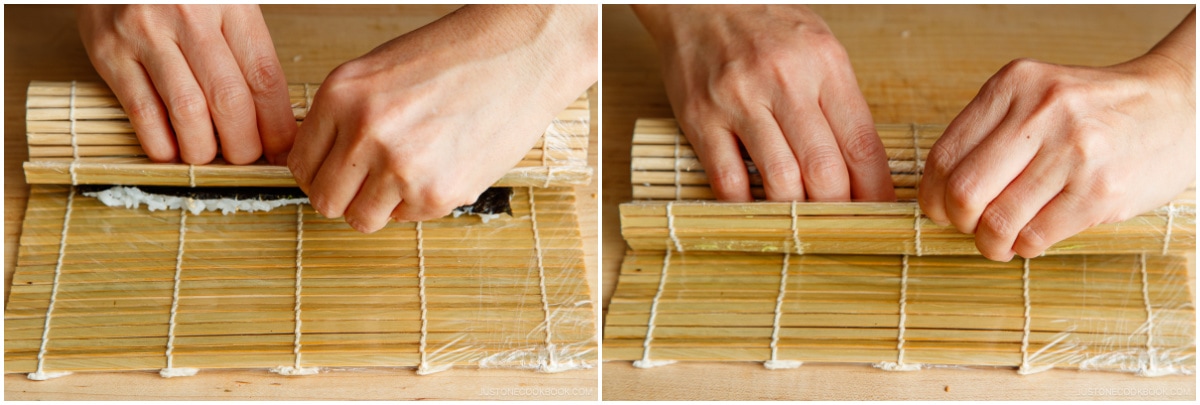
- To shape, press the top of the roll with your index fingers while squeezing the sides with your thumbs and other fingers. Your sushi roll is now done.Transfer it to a tray or plate and cover with a damp cloth at all times to prevent drying. Continue making the remaining rolls.
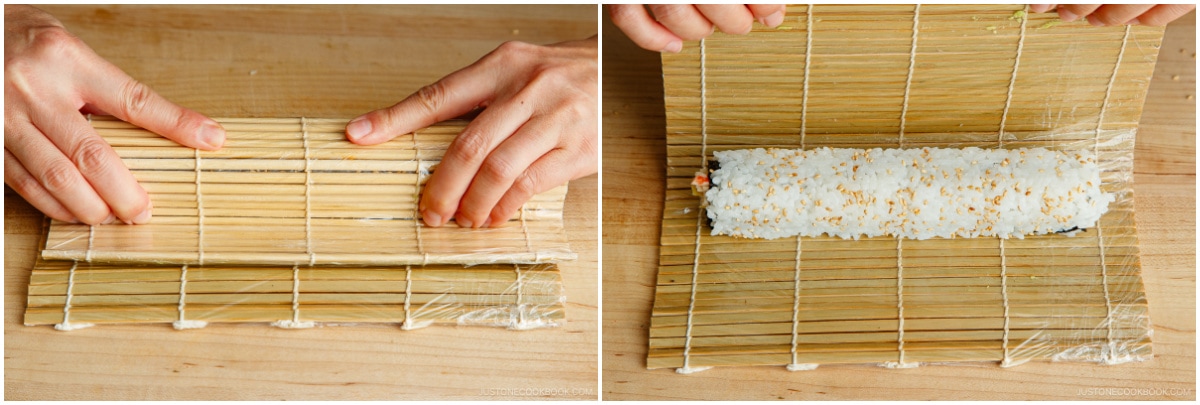
To Serve
- With a very sharp knife, cut each roll in half crosswise. Then, cut each half into 4 pieces. Clean the knife with a damp cloth after every few cuts.
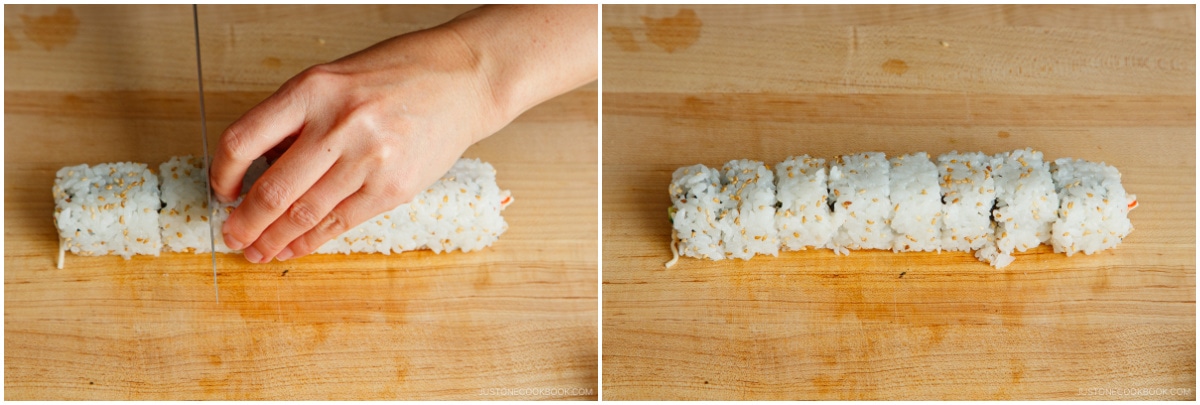
- Place the bamboo sushi mat over the cut roll and re-shape it one last time. Remove the mat and add the optional toppings of your choice, like ikura (salmon roe) or yuzu-flavored tobiko (flying fish roe).
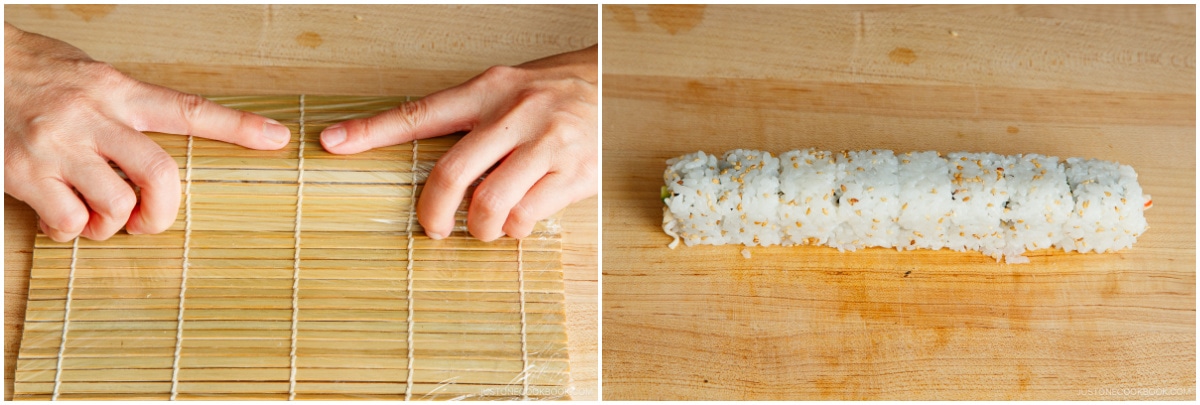
- Serve with a small dish of soy sauce and wasabi for dipping and pickled sushi ginger (optional) on the side. Enjoy!
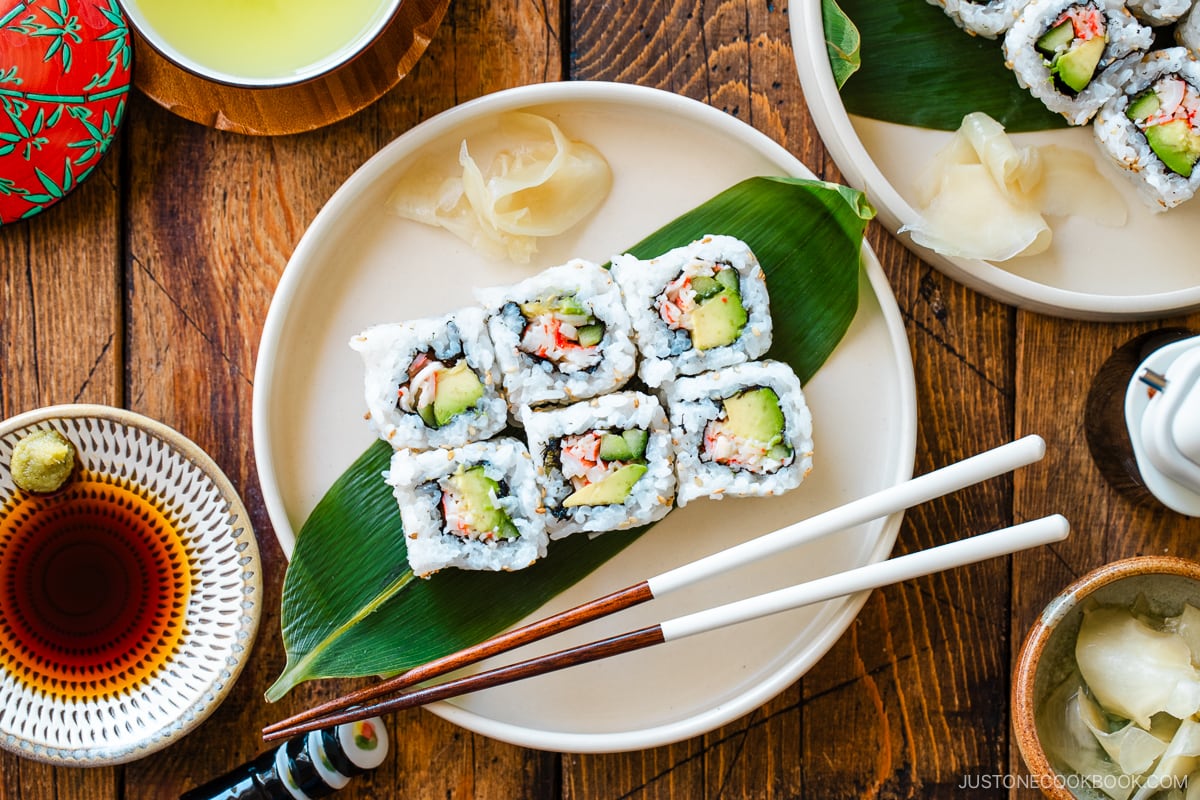
To Store
- It‘s best to enjoy sushi rolls the same day you make them. Rice gets hard and dry in the fridge. If you really want to refrigerate them, my recommendation is to cover them with plastic and a thick kitchen towel, so the rice will stay cool and safe but not become cold.
Nutrition
Calories: 567kcal, Carbohydrates: 110g, Protein: 11g, Fat: 8g, Saturated Fat: 1g, Polyunsaturated Fat: 2g, Monounsaturated Fat: 4g, Trans Fat: 0.004g, Cholesterol: 3mg, Sodium: 333mg, Potassium: 313mg, Fiber: 4g, Sugar: 6g, Vitamin A: 121IU, Vitamin C: 4mg, Calcium: 81mg, Iron: 2mg